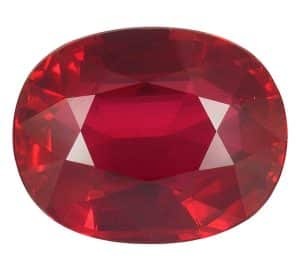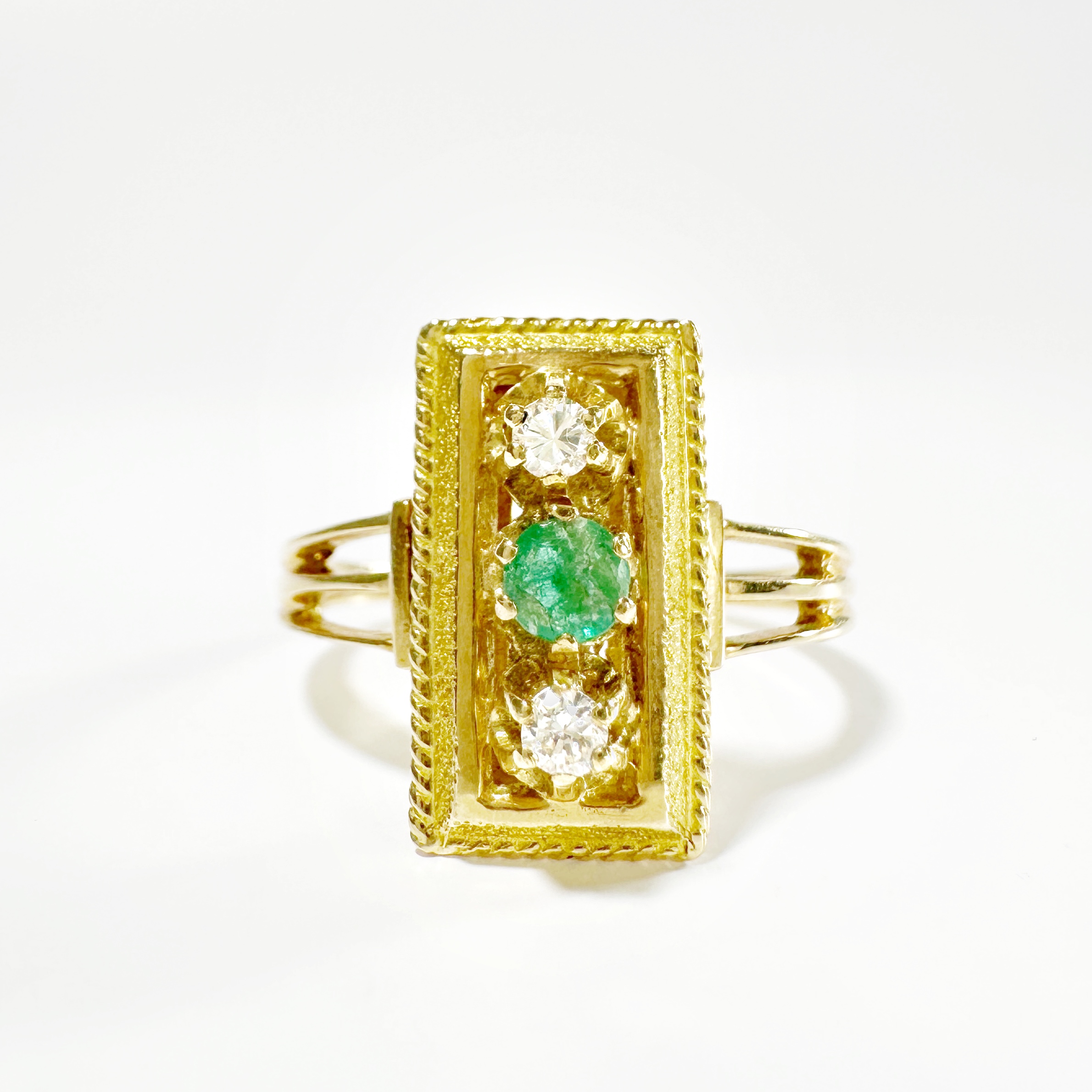 Ruby, with its fiery color and captivating brilliance, has fascinated since ancient times. Birthstone of the month of July, the fiery stone embodies intensity and burning passion. In this article, let’s dive into the history and meaning of this stone that has captivated for millennia.
Ruby, with its fiery color and captivating brilliance, has fascinated since ancient times. Birthstone of the month of July, the fiery stone embodies intensity and burning passion. In this article, let’s dive into the history and meaning of this stone that has captivated for millennia.
HISTORY OF THE RUBY
The word “ruby” dates back to the thirteenth century. It originates from the Latin “rubeus”, which means “red”. This name of course refers to the bright and intense color of the ruby, the most distinctive characteristic of this gemstone.
 Ruby occupies an exceptional position in India, a country where it has been venerated since time immemorial. Indeed, in the Sanskrit language, corundum, of which family ruby belongs to, is referred to under the refined term “Kuruvinda”. In addition, the stone bears the prestigious name of “ratnaraj” in Hindu culture, which literally translates to “the queen of gemstones”. This name reflects the paramount importance given to ruby within this religion.
Ruby occupies an exceptional position in India, a country where it has been venerated since time immemorial. Indeed, in the Sanskrit language, corundum, of which family ruby belongs to, is referred to under the refined term “Kuruvinda”. In addition, the stone bears the prestigious name of “ratnaraj” in Hindu culture, which literally translates to “the queen of gemstones”. This name reflects the paramount importance given to ruby within this religion.
In ancient times, the imposing crown of the great King Sri Raja Bir Vikramaditya was a vivid demonstration of the admiration of rubies. This magnificent crown, adorned with nine precious gems each representing a planet, reserved a central and privileged place for the ruby, symbolizing the Sun.
In the sumptuous days of the maharajas, ruby was enthroned as the jewel of choice, embellishing the sumptuous crowns and rings of princes. Like a symbol of power and prestige, the flamboyant stone illuminated the adornments of the nobles.
MAIN RUBY DEPOSITS IN THE WORLD
 Rubies are mined mainly in Asia and sometimes in Africa, Australia and some American states such as Montana and South Carolina.
Rubies are mined mainly in Asia and sometimes in Africa, Australia and some American states such as Montana and South Carolina.
Burma, where 90% of the world’s ruby production comes from, is renowned for its exceptionally coloured gems, often described as “pigeon blood”. These Burmese rubies are considered the most valuable and sought after.
The largest deposit was at Mong Hsu in northeastern Burma. The crystals from Mong Hsu are bicolor in their natural state : a blackish center and bright red outer walls. Their use in jewelry remained limited until the discovery of a heat treatment allowing the erasure of the black color of the center, leaving only the red of the periphery.
Sri Lanka is also known for its high-quality rubies, which are distinguished by their bright color and clarity.
Ruby is distinguished from spinel, which is sometimes present in the same geological formations.
THE DIFFERENT TYPES OF RUBIES
 There are many different types of rubies, each with its own characteristics and shades. Some of the best-known varieties include:
There are many different types of rubies, each with its own characteristics and shades. Some of the best-known varieties include:
- Burmese ruby: renowned for its intense color, often deep red with a slight shade of blue.
- Star ruby: which has an asterism effect, creating a shimmering star on the surface of the stone when light passes through it.
- The ruby of the island of Ceylon: characterized by its bright color and exceptional transparency.
- Mozambique ruby: usually bright red in color, with sometimes slightly purple shades.
- The so-called “Verneuil” rubies: In 1902, the Frenchman Auguste Verneuil achieved the feat of producing a synthetic ruby by fusing aluminum oxide powder with a red dye. This feat was a continuation of the work carried out from 1876 to 1891 by his adoptive father, whom he had assisted in his research: Edmond Frémy. Together, they had experimented with the synthesis of ruby using the method known as “molten salts”.
COMPOSITION OF RUBY
Ruby is the red variety of the corundum mineral family. Its color is caused mainly by the presence of chromium oxide. The other varieties of corundum are called sapphires, which are not all blue in color but all the colors of the rainbow depending on the different oxidations.
Corundum has a hardness of 9 out of 10 on the Mohs scale, making it a resistant stone, perfect for wearing on a daily basis.
All natural rubies have inclusions, only synthetic rubies can give the impression of being perfect. The rarer and smaller these inclusions, the more valuable the stone is. It is, along with colored diamonds, the gemstone that can reach the highest values.
SYMBOLISM OF RUBY
Ruby was the most precious stone in ancient times, at the heart of the myth that ruby represented the blood of Christ in Christian societies. It was the precious stone that adorned cardinal rings until the Second Vatican Ecumenical Council.
 Ruby is also considered the symbol of intense love and all-consuming passion. It evokes the most powerful emotions of the heart and is often given as a gift to express deep love.
Ruby is also considered the symbol of intense love and all-consuming passion. It evokes the most powerful emotions of the heart and is often given as a gift to express deep love.
Since ancient times, ruby has been renowned for its ability to protect its wearer from negative energies and malevolent forces. It is said to strengthen courage and offer protection from danger. In the Middle Ages, kings and knights wore them on their helmets and crowns in order to keep them healthy, as well as to protect them from injury.
Ruby is also associated with vitality and vital energy. It is said to boost inner strength, boost motivation and promote an active and fulfilling life.
Finally, the ruby wedding symbolizes 35 years of marriage in French folklore. This gemstone symbolizes the month of July.
Whether as a symbol of passionate love, protection or vitality, ruby continues to exert a timeless fascination on those who discover it, conferring unparalleled beauty and meaning.
 en
en
 Français
Français



